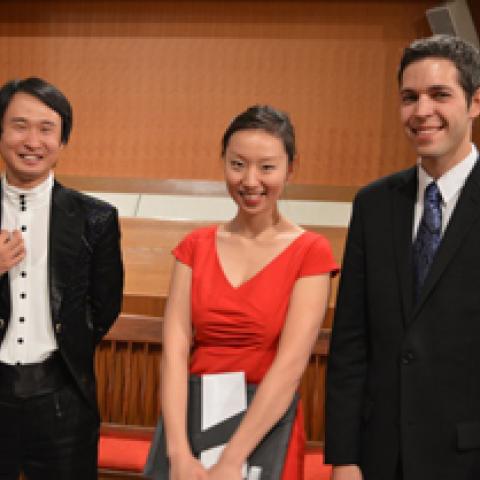
Edition Schott has published Qi Zhang’s Symphony in the Teapot, the first organ work by a Chinese composer released by Schott. Inspired by the Chinese history and culture of tea, Ms. Zhang composed Symphony in the Teapot in 2005. Because there were very few pipe organs in China, this work was originally written for electone, an electronic organ that features orchestral and newly developed electronic sounds. In 2009, at the suggestion of Cherry Rhodes and Jean Guillou, Zhang arranged this piece for pipe organ and premiered it at St. Eustache in Paris.
Zhang was invited to compose a piano piece celebrating the 70th birthday of Dr. Peter Hanser-Strecker, the CEO of Edition Schott. Qi Zhang’s Dance of the White Horse is included in Dances of Our Time, a collection of 70 new piano pieces written by composers from 26 countries under the Petrushka Project and published by Edition Schott.
Qi Zhang is currently enrolled in the DMA program at the University of Southern California, Thornton School of Music. Born in Shanghai in 1984, she received her bachelor’s degree at the Shanghai Conservatory of Music in 2007. Her studies with Professor Lei Zhu, director of the department of modern instruments and percussion at the conservatory, included performing and arranging for the electone organ. She has won first prizes in the Shanghai Electronic Organ Competition (2001), the International Electronic Organ Competition in Spain (2004), and the Oriental Youth Stars Art Series Competition in Beijing, plus the Best Performance Award, Youth Group (2005). Shortly thereafter, she came to the United States to study with Cherry Rhodes at the USC Thornton School of Music, receiving the Master of Music degree and Graduate Certificate in Organ Performance in 2009 and 2011. Her composition teachers include Mei-li Pai and Frederick Lesemann.
In 2009 Qi Zhang gave the opening performance at the conference TEDxUSC (Technology, Entertainment and Design), hosted by the University of Southern California. During that same year she won a scholarship to work with Jean Guillou in Paris.



